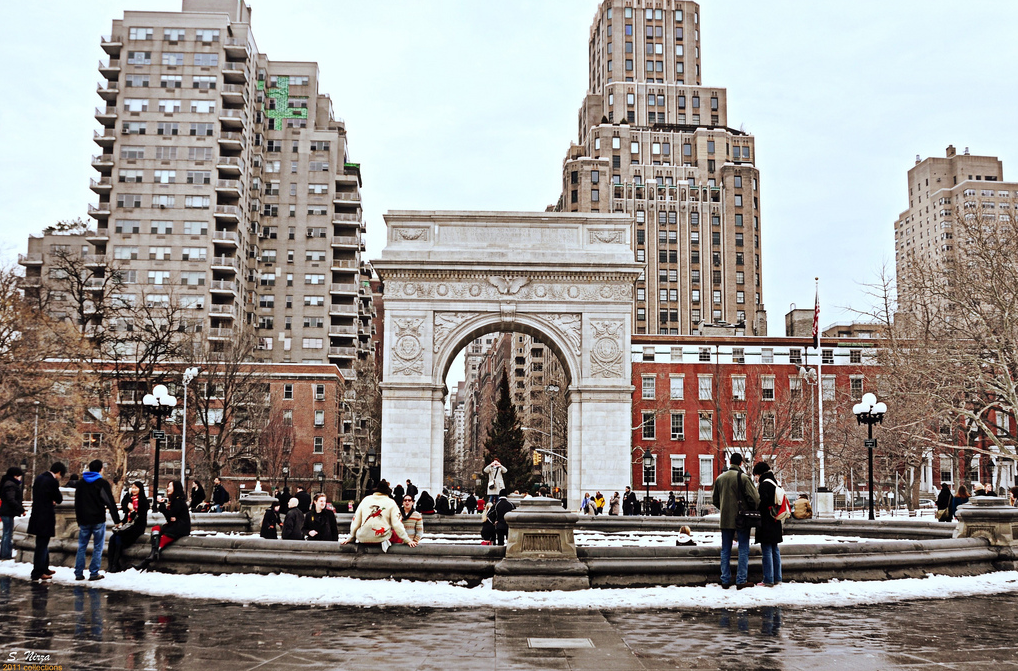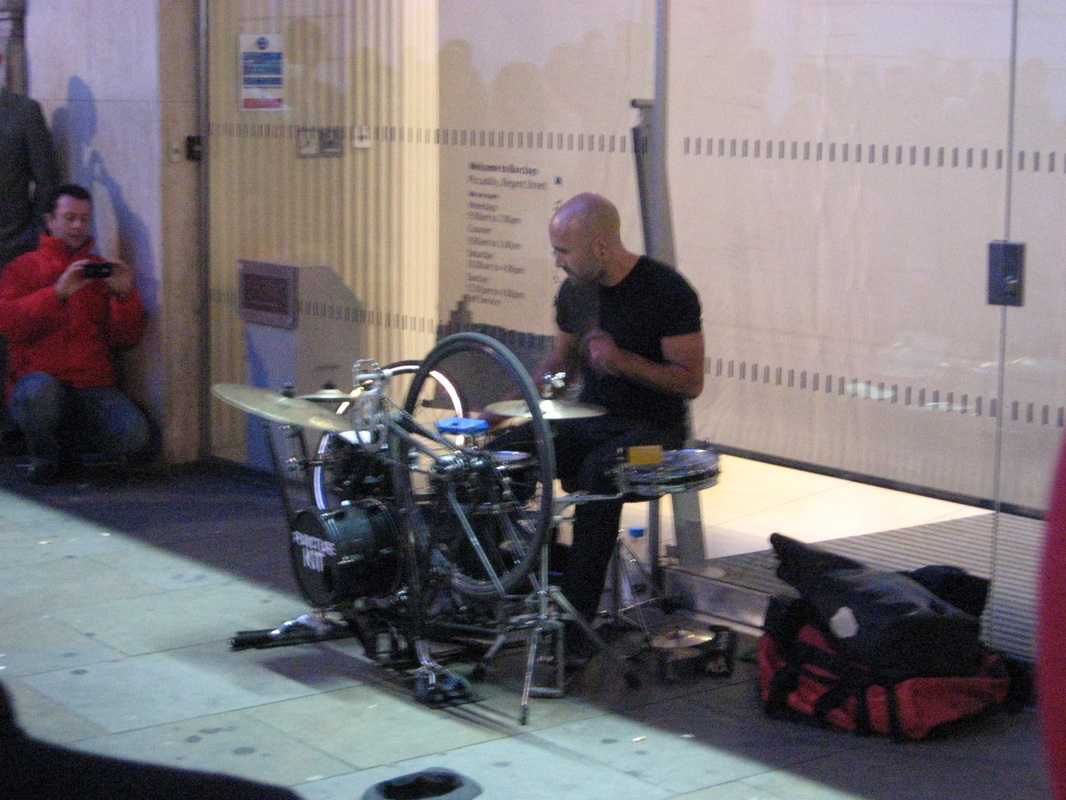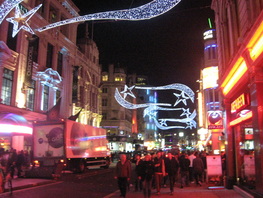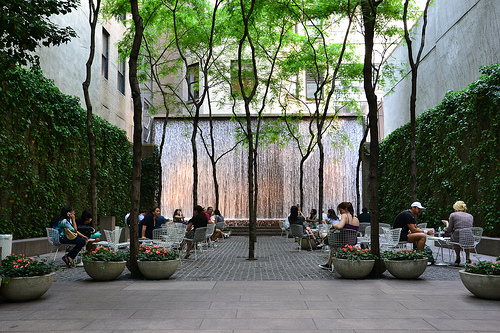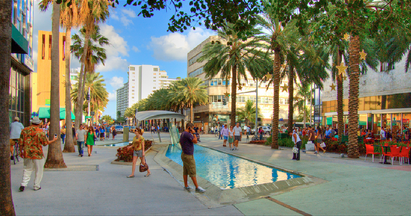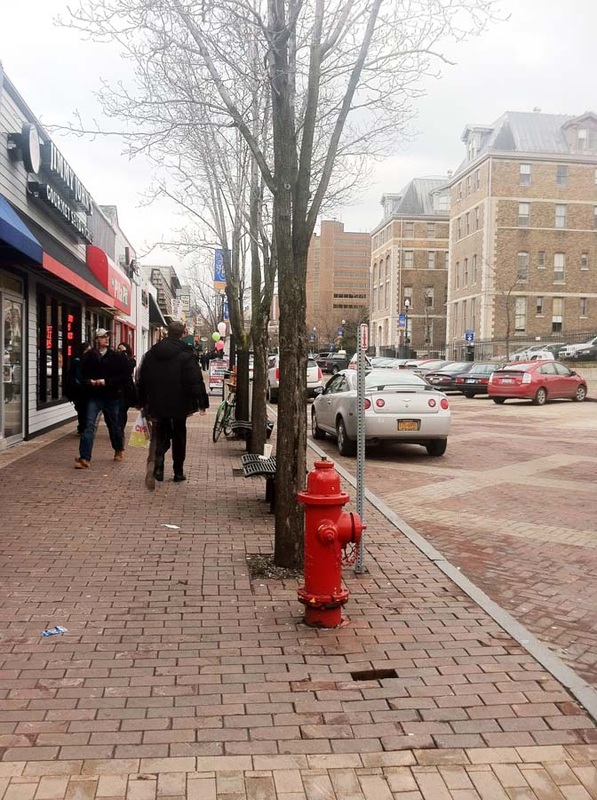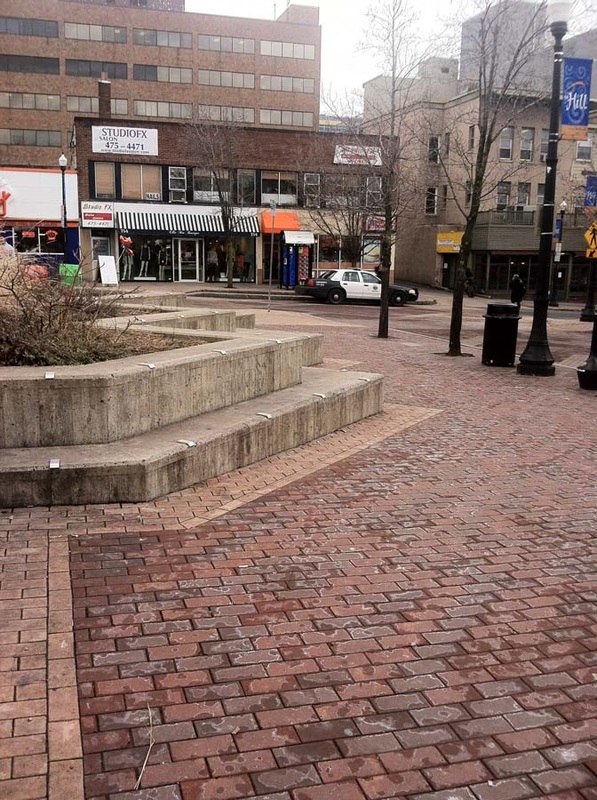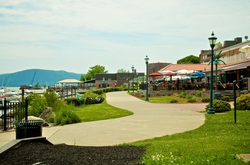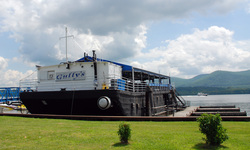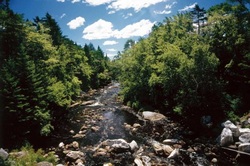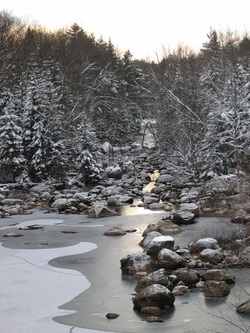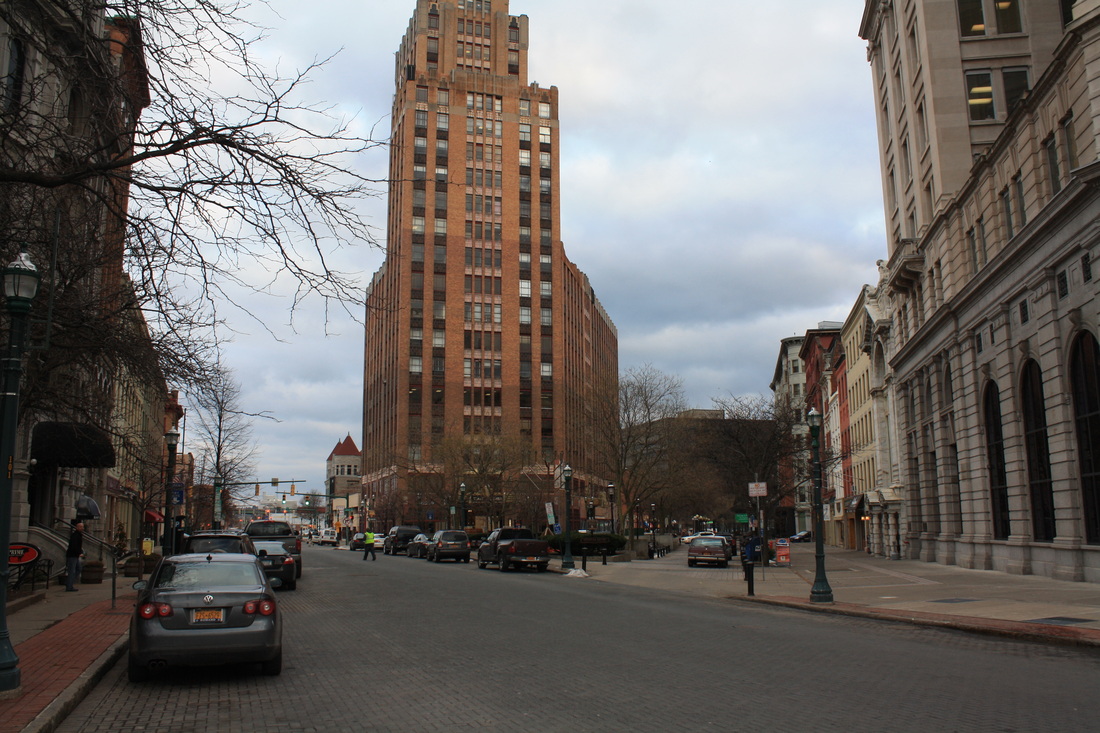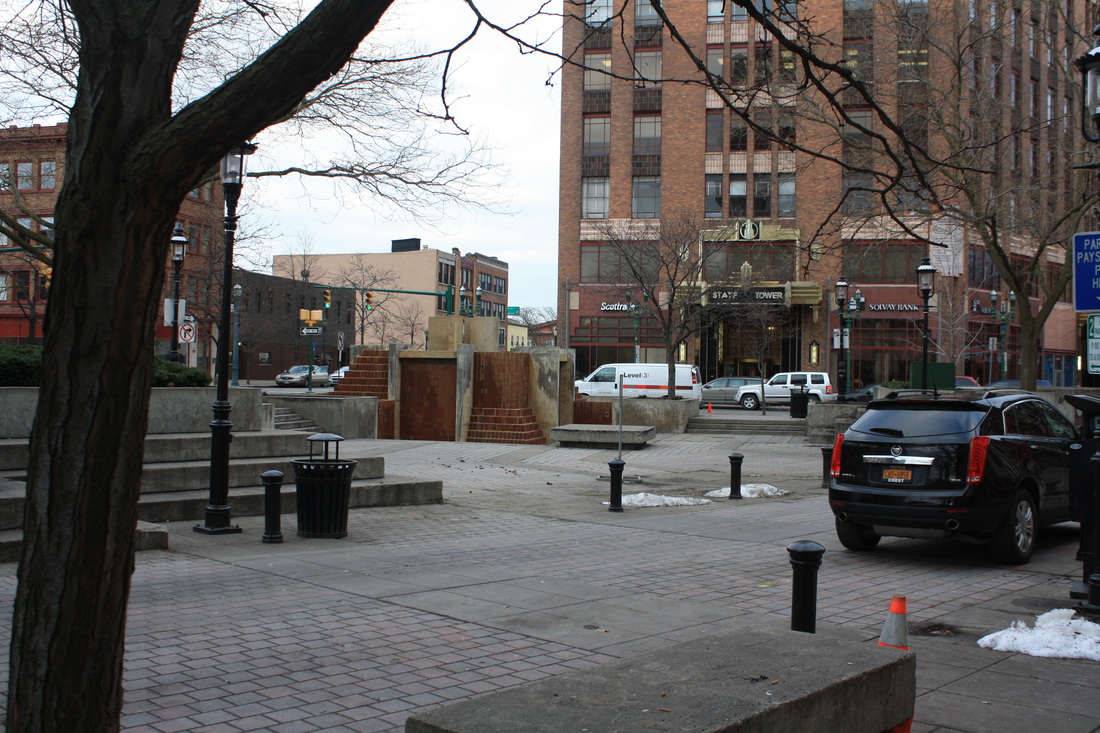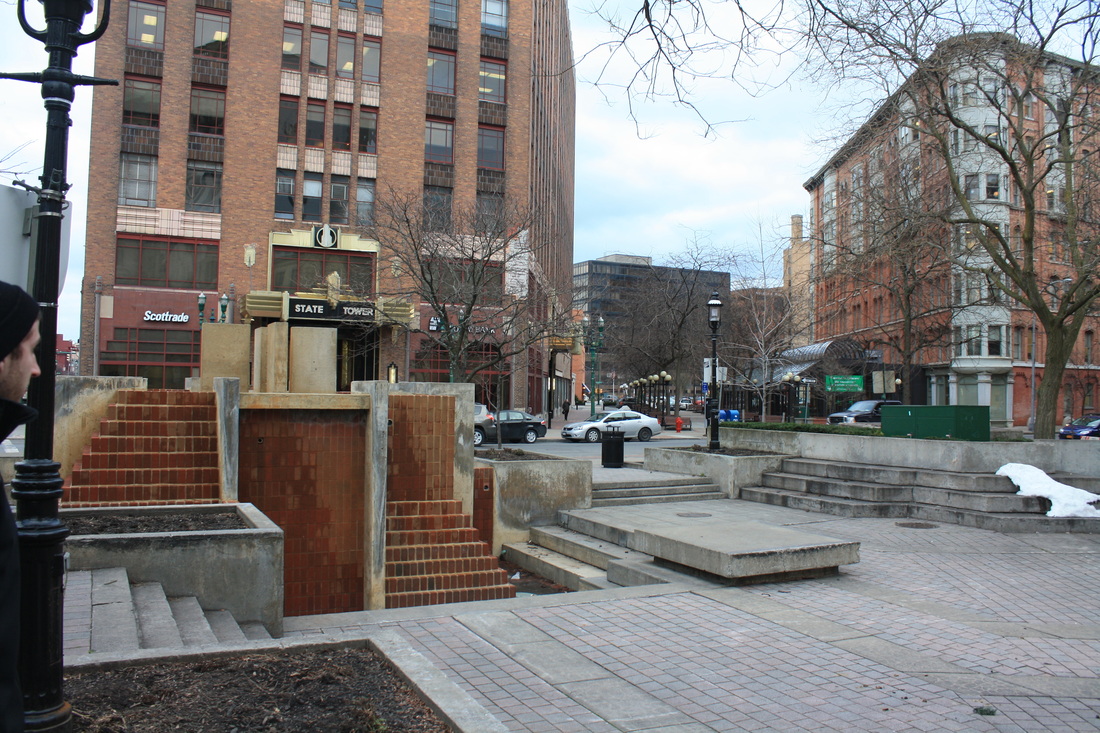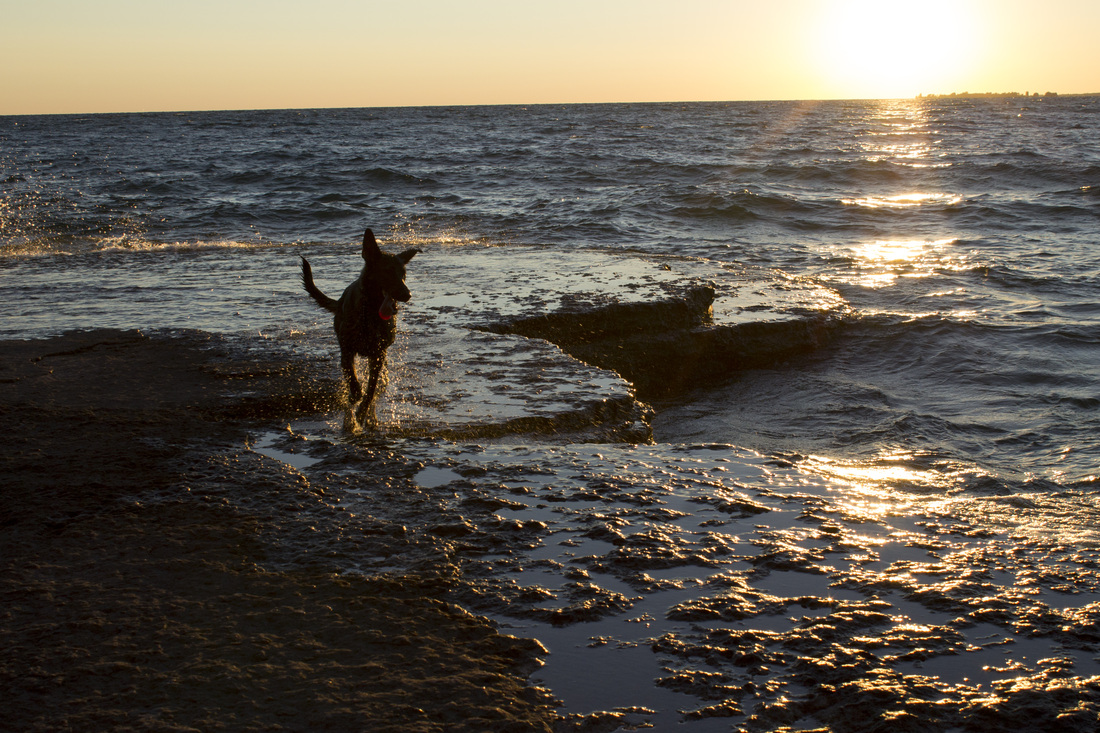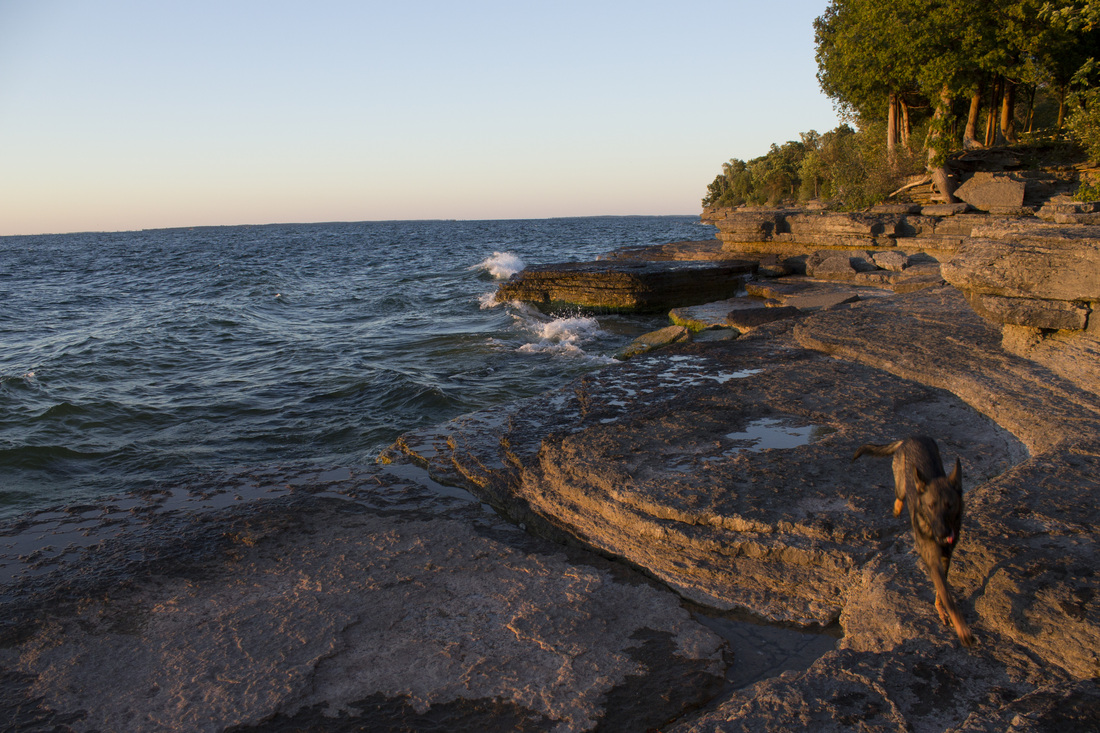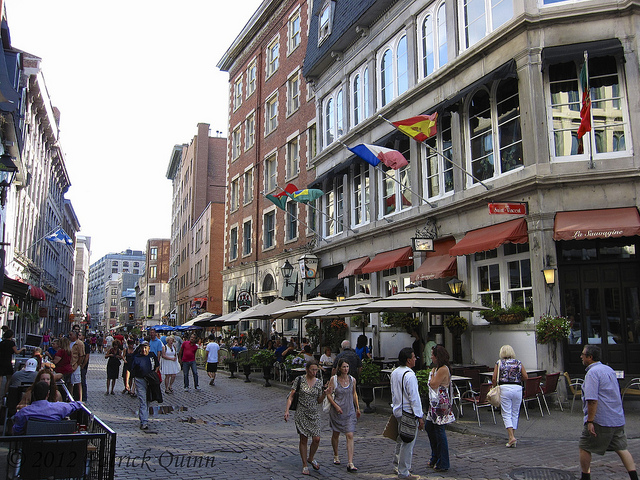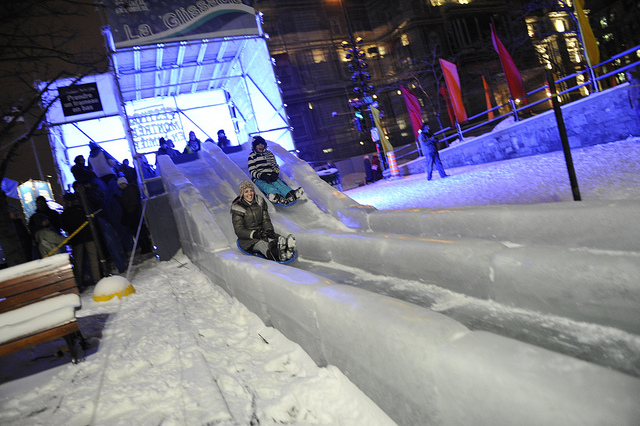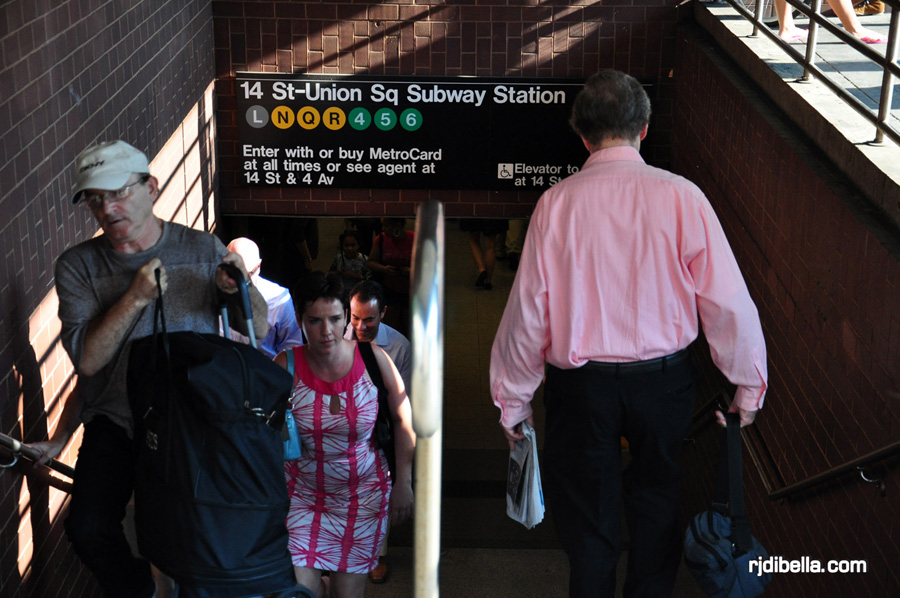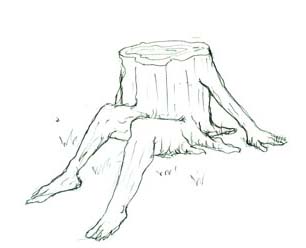my favorite public space is...
A class of 22 students from Landscape Architecture, Architecture and Environmental Studies was asked to share their favorite public space. It could be anything and it did not need to be a designed/man made landscape. Below the results:
Note: The blog image above was just added on April 11, 2013, prior to that the blog image on this page was that of the original weebly blog template.
Note: The blog image above was just added on April 11, 2013, prior to that the blog image on this page was that of the original weebly blog template.
NIMIS, SKÅNE, SWEDEN
CHELSEA ANDERSSON
JANUARY 16th, 2012 Every child dreams of adventure, of a castle, and a kingdom to protect. I am sure that is why my connection to Nimis is so strong. I was only seven when I first visited, but I can remember it perfectly. An arduous hike under towering trees, leaps over moss covered rocks, and a final cliff that suspended us over the most magnificant castle a seven year old could have imagined. This was my Kingdom, I thought, and believed that it was made by magic. There was no one in the world it could belong to but me. Nimis is situated on the rocky slope along the coast of Kullaberg Nature Reserve in Skåne, Sweden. Artist Lars Vilks began construction on his fortress in 1980, using over 75 tons of driftwood. Because of it’s rough terrain and somewhat desolate location, the castle was not discovered until two years after the initial construction was completed. Lars faced public criticism after it was discovered- it was the community’s support and Lars’ determination that allowed it’s presence to remain. Thoughtfulness, pride, beauty, and uniqueness are among many other traits that make this public space so special. |
|
Oakwood cemetery is one of the largest public spaces in the City of Syracuse. Originally designed by Fredrick Law Olmsted during an era when cemeteries were the ‘parks’ and spending an afternoon in one was considered normal.
To me, this cemetery still holds the same value as it did over a hundred years ago. Thanks to Olmsted’s design of gracefully sloping mounds and hills, it provides a dynamic environment to enjoy. The movement of the land allows people to pick and choose hundreds of individual spaces to suit their momentary interest. The old forest that makes up much of the cemetery stands above to create enough shade to keep cool during a hot summer day. Below the trunks give an ancient feel to the surrounding, but with enough spacing to feel safe. As for the tomb stones, they are a temporary fascination that fades away to reveal an inspiring design after multiple visits. Since the campus is right on Oakwood’s door step, it becomes easy to change one public space for another in order to find seclusion or comradery in a more populated space. |
|
ONTARIO BEACH PARK, CHARLOTTE, NEW YORK
This public beach experiences much activity all times of the year, however the beach's true colors can be seen as the weather becomes warmer and when summer is near. As the draw for people thickens, crowds of people can be seen walking along the Ontario banks, weaving between sand castles, volleyball games, and children splashing along the lake shore. The adjacent pier juts into Lake Ontario, allowing for those to bike, walk, or run the short distance to the end. Every summer my family and I make sure to take this short walk at dusk. Graffiti covers the end basin to mark all that have been to the end and back. Music and the laughter of those playing on the each can be heard from the long stretch of beach. The old historic Dentzel Carousel opens its doors on the first summer day of the season, drawing people of all ages to hang from its majestic horses, and other variety of zoo animals. Its music trickles slowly beyond the beach shores, providing a beat for the waves and a slow tune for the new musicians setting up. Every Wednesday night during the summer a number of bands perform concerts in the center stage. Their music echoes along the lake and its waves, encouraging people from all over Rochester to come listen to great music, engage in a number of activities, and enjoy summertime with family and friends. Ontario Beach Park illustrates a great public space because its success can be seen in the variety of activity it offers and the amount of people it draws to its shores. -Olivia Bennett |
Immaculately maintained parterres and vegetation on site

Piccadilly circus, london, england
My favorite public space is Piccadilly Circus,
London, UK, which I visited two times during a recent vacation. The space is a highly
energetic, cheerful, and exciting place to experience. Although the adjacent
museums, restaurants, and shops attract visitors, the true character of the
space is defined by interactions of people taking place outside. The street
scape is very wide, and has huge open spaces on either side of the road running
through the middle. This allows for the space to host a variety of activities, including
street performers, outdoor markets, and more. Crowds of people gather around
the spontaneous entertainment, allowing there to be an unspoken connection between
everyone watching. I was amazed at the sense of community I felt, especially
with tourists from all around the world who look and speak differently than I
do.
The aesthetic quality was interesting due to the contrast of old European buildings with contemporary structures. For blocks there was festive, ornamental lighting hanging between the buildings, as well as signs evoking holiday spirit! The smells were tasty and the sounds were loud and lured me throughout the entire space. I may have been lucky to visit during the liveliest time of the year! Piccadilly Circus, London, UK Zach Kalette January 15, 2013 |
Paley Park Panorama
|
PALEY PARK
Paley Park is a small, “pocket park” located in midtown Manhattan, just one block away from the MOMA. From my first visit to the park I was enthralled with its ability to allow the user to forget they are in a densely populated city. It’s quiet, comfortable, and calm in a loud, busy and occasionally abrasive city. The 40’ wide park is squeezed between high rise buildings, and stretches 100’ back from the street. As you pass the park, your eye is directed to the 20 foot tall waterfall which spans the entire back wall. The park is elevated slightly from the sidewalk, with a set of 4 steps serving as the entrance to the park. As you enter the park you are greeted by the sound of cascading water, which masks the sounds of midtown east. The two side walls feature seat walls, and are covered in a thick mat of English ivy. The loose canopy of Honey Locust trees provides the perfect amount of dappled shade during the afternoon. The park features light wire mesh chairs and marble tables, which allows the user to choose their most comfortable spot. Visually light, these chairs don’t take away from the major focal point of the park. Even during a busy afternoon, the park allows you to feel totally secluded from the rest of the world. New York, New York James Gross Jan 16th 2013 |
Plan- Paley Park
View from Entrance
|
Marshall street, syracuse ny
|
Marshall Street has become very familiar since I have attended school in Syracuse. It is located right next to campus, making it an extremely convenient location for lunch, dinner, and late night rendezvous. It doesn't matter what time of year/day it is, there are always people using the space. When the weather permits, many people are found sitting on the terraced style seating across the street from the storefronts. This is one of my favorite places to grab a quick meal and people watch.
Located right next to the terraced seating is a bus stop where interesting characters tend to hang out. I couldn't describe Marshall Street without mentioning one of my favorite characters, Gertis, the famous homeless guy in the wheel chair. Gertis always shouts compliments when you walk by hoping to score some spare change. Over the years him and the other friendly homeless people have become an integral part of Marshall Street. It is a small space, but it's scale adds to the coziness and it has everything I need within walking distance. Because of Marshall Street's location and its diversity of vendors, there are always people using it. Location: Marshall Street, Syracuse NY Author: Kristy Pedersen Date: January 15, 2013 |
|
Luke Mancuso
Public Space Experimental Unit Assignment 1: Favorite Public Space 1/16/13 Located in the Lower East Side of Manhattan, Washington Square Park acts as a hub for all kinds of people to relax, eat lunch, and people watch in a wide-open atmosphere. Such spaces in NYC are rare to come by that accommodate a multitude of activities seen on any particular day. Outdoor musicians are common sight within the public space, usually situated around the main fountain taking advantage of the heavy pedestrian traffic as well as seating for people to sit down and enjoy the sights and sounds. A dog park accompanying the park is a rare chance for people to let their dogs free in a safe environment within the city.
Another aspect that allows Washington Square Park to be very successful is the very close proximity of novelty shops, restaurants, and bars all within a short walking distance of the gathering space. This relationship of privately owned stores surrounding a publicly up kept space is an important dynamic within cities that attribute to the type of use seen within a park. Another aspect I found very intriguing is the obvious disregard for the “no skateboarding” rule. Despite this rule being posted within the park, the skateboarders showed no threat to people walking as they filmed their tricks, and kept way out of people’s paths. |
|
WesterGasfabriek (Westerpark)
Location: Amsterdam, Netherlands Description: Urban park with post industrial buildings Author: Zachary Barker Date: January 16, 2013 WesterGasfabriek (Westerpark) located just west of Amsterdam’s historic canal district quickly became one of my favorite public spaces because of its programming. There was a new event at park every week. While I was living in Amsterdam, the events ranged from a professional tennis tournament, to a farmers market, and even a children’s film festival. The events were varied and attracted all people from all different parts of Amsterdam. The park felt like a destination instead of public space to only be utilized by citizens who lived near by. I also enjoyed the free WI-FI of WesterGasfabriek. This allowed people to work outside when the weather was nice. It was not uncommon to see young professionals doing serious work from a park bench or even the large lawn area, while drinking a coffee purchased from one of the parks cafes. Another element of Westerpark that I enjoyed was its combination of private enterprise and public space. The park was home to several restaurants, a coffee shop, and art house movie theater. These amenities made the park’s main walkway busy with people and provided areas for great people watching. The private amenities also activated the public spaces late into the night. |
Aerial view of Westerpark and surrounding neighborhoods of Amsterdam.
View of one of Westerpark's pond inside of a former gas tank. A very nice area to site and enjoy the sun the rare times it is not raining in Amsterdam.
One of my favorite spots in Westerpark. It is a small grassy area located next to constructed wetland and dam. A surprisingly scenic area in the middle of Amsterdam.
A very popular cafe/bar in the center of Westerpark. It was one of my favorite spots to work on my thesis at because it overlooked a beautiful landscape, but also provided great people watching.
|
Hanover Square, Syracuse, NYHanover Square is located in downtown Syracuse on the corner of Water and Warren Streets. It is one of my favorite public spaces because of its scale, atmosphere, and users. The internship I held last summer was a five minute walk from the square and I would take lunch there on most days.
The seating steps around the outside of the square work to turn the focus inward and it's small scale means that a user can easily observe any point in the square from anywhere on the steps making it an ideal location for people watching. Hanover Square's location downtown and the adjacency of several restaurants and other businesses make it popular as both a destination and pedestrian corridor during warmer months and the presence and proximity of people gives it a dynamic quality that other public places seem to lack. The raised steps and vegetation around the outside of the square create enclosure and isolate it from traffic on the adjacent streets while the vegetation provides shade during the summer. The square's fountain also contributes to its atmosphere, masking urban noises and helping to moderate the temperature. In short I enjoy Hanover square because it is accessible, comfortable, and interesting. Hanover Square, Downtown Syracuse Dan Arseneau 16 January 2013 |
Looking east at Hanover Square from Water St.
Street level view into the square from the south.
View down into the square from the south east corner.
Looking across the square from the top of the seating steps. 330 on a weekday in January is not the busiest time here.
|
|
Location: Robert G. Wehle State Park in Henderson Harbor, NY; former dog breeding estate turned state park
Author: Mackenzie Wheeler Piggott Date: January 15, 2013 I should precede my explanation by noting that I live in Sackets Harbor, NY, and have a hyperactive zombie dog named Skye. She is a doll, but it can be exhausting trying to keep her entertained and sane in a tiny apartment. That is why I have a deep appreciation for Robert G. Wehle State Park in Henderson Harbor. My husband and I stumbled upon this mildly eerie park accidentally, which has by far been the best discovery since moving here. Many of the structures of the estate remain intact, including several residential buildings, a pigeon house, a log cabin, and a dog cemetery. Although these can be a bit creepy, the majority of the park is forested wetland trails. The truly glorious aspect of this park, however, is that not many visitors walk these trails through the woods, so I can go for a run or a walk with my dog without having to constrain her boundless energy and my limited sanity with a leash. One of the trails runs along the edge of the cliffs which fall into Lake Ontario, and end in a secluded rock beach, where we take a break to appreciate the beauty of protected nature. |
Baxter Boulevard

Ariana Muca
Site: Baxter Boulevard
Location: Portland Maine
Baxter Boulevard is the most visited public space in the area. The boulevard is a trail around a little inlet of water or a little bay. The bay itself is not considered very clean. All the sewage from Portland goes through the wastewater treatment and into the bay. At one point the bay was a wasteland because you were not allowed to swim or fish in it. The city recognized that they needed to change the space and created a 3.5-mile trail around the bay with some big fields for people to layout and play soccer games. As soon as the boulevard trail was developed it became the most popular place to go for a run or walk in Portland.
My favorite part about the Boulevard is that it is right on the water. Working out next to the ocean is very peaceful and I always feel rejuvenated after finishing the loop. The designer paid special attention to little details as well. The trail is made with gravel, which is an easier, surface than concrete, asphalt or sand to run on. The boulevard has little fencing so the open feel is continuous as you travel through the site. The bridges are made of brick reflecting the town of Portland which consists of a lot of brick. Finally I love how each time you visit the site it’s a little different depending on the time of day, the tide, the season, and the people that you see. The space is constantly changing while staying consistent like the ocean.
Site: Baxter Boulevard
Location: Portland Maine
Baxter Boulevard is the most visited public space in the area. The boulevard is a trail around a little inlet of water or a little bay. The bay itself is not considered very clean. All the sewage from Portland goes through the wastewater treatment and into the bay. At one point the bay was a wasteland because you were not allowed to swim or fish in it. The city recognized that they needed to change the space and created a 3.5-mile trail around the bay with some big fields for people to layout and play soccer games. As soon as the boulevard trail was developed it became the most popular place to go for a run or walk in Portland.
My favorite part about the Boulevard is that it is right on the water. Working out next to the ocean is very peaceful and I always feel rejuvenated after finishing the loop. The designer paid special attention to little details as well. The trail is made with gravel, which is an easier, surface than concrete, asphalt or sand to run on. The boulevard has little fencing so the open feel is continuous as you travel through the site. The bridges are made of brick reflecting the town of Portland which consists of a lot of brick. Finally I love how each time you visit the site it’s a little different depending on the time of day, the tide, the season, and the people that you see. The space is constantly changing while staying consistent like the ocean.
Foothills park: Palo Alto CAMy favorite public space is Foothills Park in Palo
Alto, California. I first discovered this park after our family moved to Palo Alto in 1998. While we lived there for two years, we tried to visit as much as possible. I remember whenever we had family come to visit, that was one place we would go. One reason this is my favorite place exists to the incredible view. Looking North 25 miles, you can see San Francisco’s skyline. Looking closer to the north east, multiple bridges along with San Francisco bay can be seen. Viewing over the bay to the east are large mountains and during the winter months, the mountains are capped by snow. Only 13 miles to the west, you can find California’s coastline and an incredible view into the pacific. However, you can see the ocean from the park. Within the park, a small lake has hosted many great fishing trips while I lived there. Another great feature about the park is all the different hiking trails. Another reason this is my favorite public space is the park is rarely ever crowded. When I go to a place, I don’t like to be surrounded by crowds of people hovering over me. It’s nice to go somewhere and enjoy a space where you do not have to look over someone’s shoulder to see it. Derek DeFazio http://www.flickr.com/photos/sally_mcburney/4146396972/ http://www.panoramio.com/photo/71815745 http://www.panoramio.com/photo/8930129 |
[Saratoga Race Course]Growing up in Saratoga Springs, NY I have always been immersed within history. I live just a few miles from the Saratoga Battlefield, which was the turning point of the American Revolution. As well as right near the Historic Saratoga Race Course, the oldest sporting venue in the United States. Living here has shaped my view of the landscape and what type of landscape I feel most comfortable in.
Saratoga Race Course is my favorite public space. It is a sporting venue, but also a place where history and modern life collide. Every weekday at 11am and 10:30 am on the weekend, thousands flood the gates to get the best seat or picnic table to view the 12 races of the day. The track is full of over 100 years of history and tradition, yet feels as if it is a modern venue at the same time. One of my first memories of the track was the lady with the big hat. A staple in horse racing that goes back over 100 years, yet thousands enter the tracks gates daily with the same big hats. I think the Saratoga Race Track is really just a fun environment. It is a very old venue yet feels modern. Once you enter the gates, you enter a new world. You are no longer watching someone play baseball in the new Yankee stadium; you are watching jockeys race horses while you sit on a wooden bench. I enjoy the hustle and bustle of the thousands who go to the track daily, as well as how they have managed to preserve such a historic venue for high volume activity that continues today. Location: Saratoga Springs, NY: Downtown Author: Ben Boisclair Date: 1.15.2013 |
The ReichStag building and The Fridrich-Ebert-Platz
"Dem Deutchen Volke" To the German People
Berlin, Germany. The Government District
By Ana Maria Castillo Ruiz
January 18, 2013
Where the old and modern worlds merge as one, the Fridrich-Ebert-Platz represents the unity of a once divided country. The impressive renovation of the parliament building and the addition of modern buildings to the governmental district, keeps the Fridrich-Ebert-Platz a popular public place for tourists and locals to go. The simple design of the plaza is complemented with various elements of the old and complex, the modern and the futuristic.
Berlin, Germany. The Government District
By Ana Maria Castillo Ruiz
January 18, 2013
Where the old and modern worlds merge as one, the Fridrich-Ebert-Platz represents the unity of a once divided country. The impressive renovation of the parliament building and the addition of modern buildings to the governmental district, keeps the Fridrich-Ebert-Platz a popular public place for tourists and locals to go. The simple design of the plaza is complemented with various elements of the old and complex, the modern and the futuristic.
|
When you walk across the Platz, you feel like you were traveling through time. Part of the late 19th century architecture is the renovated Reichstag building that after its renovation has a modern touch, the Reichstag dome. The landscape has an infinite feel with the meadow surrounded with lines of trees and repetitive landscape. This public space is refreshing with the combination of classic and modern elements. The German Constitution is inscribed in a crystal wall surrounding the parliament.
It is not only the architecture which is mesmerizing, it is the juxtaposition of the distinct architectural eras and still reveals the wide open space in front of the parliament, where people in the summer time take time to relax, lay down in the meadow and around the gardens. Playing with detail and geometric figures, Berlin’s government district is a successful public delight. A visitor like me can pass by and enjoy the architectural beauty and its gardens. |
Rue st. paul "old montreal"I grew up in an agricultural community in upstate New York. Plattsburgh, and the surrounding area, is snuggled between the high peaks of the Adirondack Mountains and Lake Champlain. Although it is my home town, it can become a rather boring place. Some of my favorite places are actually located in the surrounding states, or even within the borders of our northern neighboring Canada.
Being from New York State, many people often assume that I can readily access the Big Apple. On the contrary, Boston is a quicker commute away and Montreal even faster. Over the years, Montreal Quebec has become one of my favorite places to visit. It has everything for me, including a vibrant art community, amazing architecture, and fantastic food. There are high-rises and great parks, subways and bicyle share systems, festivals year round, and pride in the home-city hockey team that rivals even the Boston faithful. My favorite place in the city of Montreal is in the oldest part of the city known as "Old Montreal". In particular, Rue Saint Paul, which runs parallel to the river. The streetscape is always alive. Not even the frigid temperatures of winter slows the activity. In the warmer months, there are vendors and craftsmen all about. In the winter, the celebrations continue. When the river frezes, they use blocks of ice cut from its banks to build a slide that transects Rue St. Paul in Jaques-Cartier Square. Winter is also when they celebrate the fesitval of lights which is an amazing spectacle to see over the contrasting snow cover. The streets are paved with chunky cobble stone, the lighting has a classical look and height, the scale is inviting, and there is always something to do. I am intrigued by the pride that Montreal"ers take in this place, and I have slowly developed my own. It is definitely one of my favorite public spaces. Rue Saint Paul, Montreal Quebec Joshua Thayer January, 21 2013 |
Union square subway stationNew York, NY
Nick Imperial My favorite public space is the Union Square/14th Street subway station in Manhattan. Not technically an “outdoor” space, it is one of several NYC subway stations that are particularly conducive to public performance. While its large, open, central area accomplishes its original intent of allowing large crowds to access the 7 subway lines that stop here, the Union Square station serves the extra purpose of providing space for people to stop and watch a performer. Whether it be a group of musicians, a dancer, or an individual singer, people can take a break from their busy day to witness some unexpected art. The open layout of the space gives people room to stop and observe without feeling in the way of the rushing crowds of subway riders. The rushing crowds themselves serve an important purpose as well, their paths dividing the space into several smaller “rooms”. One can find pockets of relative calm in these small “rooms,” creating the perfect environment for a performer and their audience. The Union Square subway station is a beautiful example of the kind of unexpected functions that often arise in the most successful urban spaces. It demonstrates the creative and resourceful capacity of humans given an adequate public space. |
StumpieProposed Experiment
Author: Ariana Muca Cost: none The administration has been trying to get rid of the term stumpie. The term stumpie was originally used by Syracuse University students to insult ESFers. Instead of being insulted ESFers embraced the name and have called each other that ever since. During orientation week the Dean asked the OLs to stop using the term stumpie because the administration wanted us to be called mighty oaks. Instead of conforming students designed shirts and stickers that were distributed across the student body. The administration continues to try and stop the term from being used. For example they refused to let the new cafe in the Gateway Building be called The Stump. By make snow stump sculptures all through out the quad our class could make a statement about how the students of ESF want to perceived. |
snow path experimentNick Imperial
After the next big snow, before anyone has disturbed it, we should inscribe a path in the snow on the ESF quad and observe how many people follow it. We could experiment with different paths, some more direct than others, and try to determine people’s motivation for following them. We could make observations by studying footprints (less time consuming, less accurate), making 1st person observations (more time consuming, more accurate) or recording video (moderately time consuming, more accurate). |
don't 'walk' across the quad!
Zach Kalette
It is a tradition at ESF to not 'walk' across the quad from one corner to the other using a direct path. I am curious to know how dedicated the ESF student body is if they were forced to use the quad in this type of manner. By blocking the sidewalks and leading them onto the quad, we can threaten that they are on camera and see if people transverse the space using alternative modes of movement. For example: Leap frogging with a partner is acceptable, as well as skipping, tumbling, side stepping, etc. If they simply walk.....well....they are just not true stumpies! It would be best to conduct this experiment when the weather becomes warmer. I expect there to be little to no cost, with the exception of some cones or a barricade to block the side walks at the corner of Illick. We could film throughout an entire school day, and perhaps during a weekend night. |

Proposal by Eric Blatz
It isn’t unusual to find mirrors within a landscape. They can increase the amount of light within a dark space and they have the ability to imply greater depth, giving the illusion of larger space. They can provide sculptural value and can become whimsical center pieces. What I had difficulty uncovering, however, is the effect on social behavior and movement within a space.
I know I’m guilty of using reflective surfaces like car window to see how I look. It’s either common human behavior or I’m just more vain than I had originally thought. Regardless, it would be interesting to see how a reflective surface, such as a mirror, within a landscape affects human behavior in a landscape. I would like to see how it affects movement through space. Do people walk closer and slower or is there no effect? How does it affect our attention in a landscape? Can that attention be used to highlight additional features within a landscape? Does it affect how we sit or gather?
An experiment would require a control without the mirrors, followed by a mirrored setting which tries to maintain similarities in time of day and weather. The materials would be cost effective since only a few mirrors of varying or similar size would be required. With the data compared between the control and the experiment, we could hope to find substantial results which could help us determine the applications in future installations for focusing attention and movement.
It isn’t unusual to find mirrors within a landscape. They can increase the amount of light within a dark space and they have the ability to imply greater depth, giving the illusion of larger space. They can provide sculptural value and can become whimsical center pieces. What I had difficulty uncovering, however, is the effect on social behavior and movement within a space.
I know I’m guilty of using reflective surfaces like car window to see how I look. It’s either common human behavior or I’m just more vain than I had originally thought. Regardless, it would be interesting to see how a reflective surface, such as a mirror, within a landscape affects human behavior in a landscape. I would like to see how it affects movement through space. Do people walk closer and slower or is there no effect? How does it affect our attention in a landscape? Can that attention be used to highlight additional features within a landscape? Does it affect how we sit or gather?
An experiment would require a control without the mirrors, followed by a mirrored setting which tries to maintain similarities in time of day and weather. The materials would be cost effective since only a few mirrors of varying or similar size would be required. With the data compared between the control and the experiment, we could hope to find substantial results which could help us determine the applications in future installations for focusing attention and movement.














